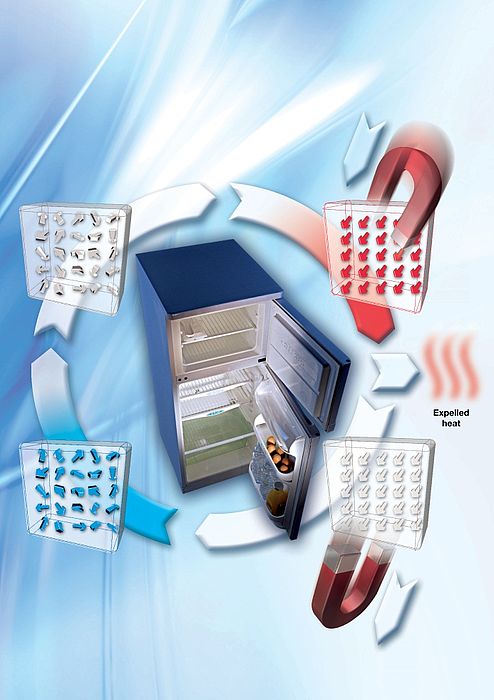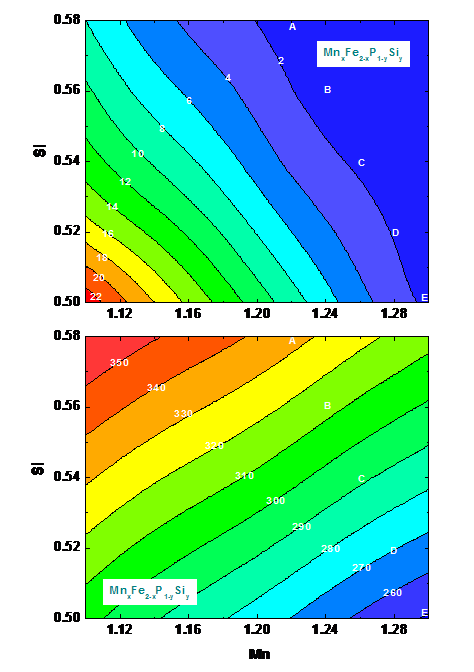Magnetocalorics Materials
Modern society relies on readily available refrigeration. Magnetic refrigeration has three prominent advantages compared to the most commonly used com¬pressor-based refrigeration. First there are no harmful gasses involved, second it may be more energy efficient and third magnetic refrigerators generate much less noise. Recently a new class of magnetic refrigerant-materials for room-temperature applications was discovered. These new materials have important advantages over existing magnetic coolants: They exhibit a large magnetocaloric effect (MCE) in conjunction with a magnetic phase-transition of first order. This MCE is, larger than that of Gd metal, which is used in the demonstration refrigerators built to explore the potential of this evolving technology.

An optimized magneto-caloric material can be seen as an extremely efficient converter for energy from the spin sector (magnetization, magnetic field) to phonons (thermal energy) and vice versa. Due to the microscopic quantum nature of the spin system in a solid-state material, and its coupling to the lattice, this energy transfer possesses an inherently high efficiency. Thus, given the right magneto-caloric system, we can use heat flow between the material and its surroundings to switch a suitable material across a magneto-caloric transition and thus we are able to convert this thermal energy efficiently into a change in magnetic field. The latter needs only to be 'picked up' in a solenoid and the transfer of heat to electrical current is complete. Alternatively, one may switch magnetic fields that are applied on a magnetocaloric material, which will result in a change of temperature. This change of temperature can be employed in a heat pump.
Recently, a few magnetocaloric refrigerator demonstrators have been built that work near room temperature. Most of these devices employ Gd metal as magnetocaloric material. Gd is very suited for demonstrators, because of its Curie temperature close to room temperature and its large magnetic moment. However, because of the rather high materials costs and the limited availability of rare earth metals, commercial products based on Gd can not compete. The development of new magnetocaloric materials is therefore a prerequisite for market introduction of this technology. Within an FOM-IPP program novel transition-metal based magnetocaloric materials are currently developed that may lead to commercially competitive heat pumps.

